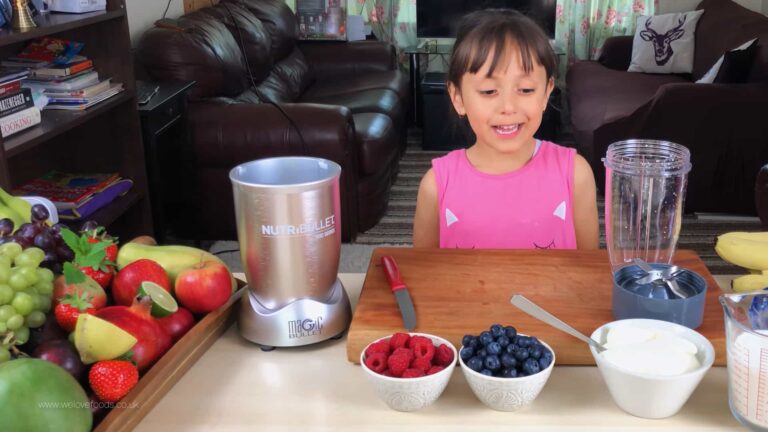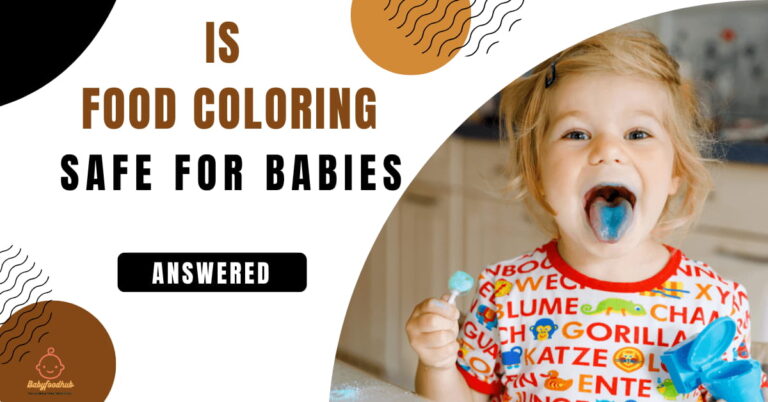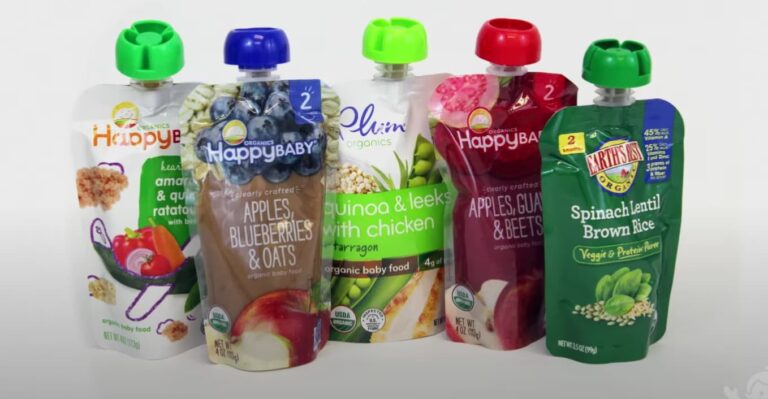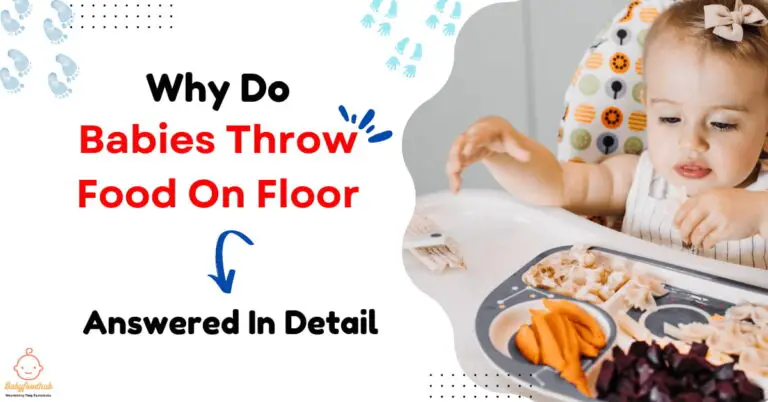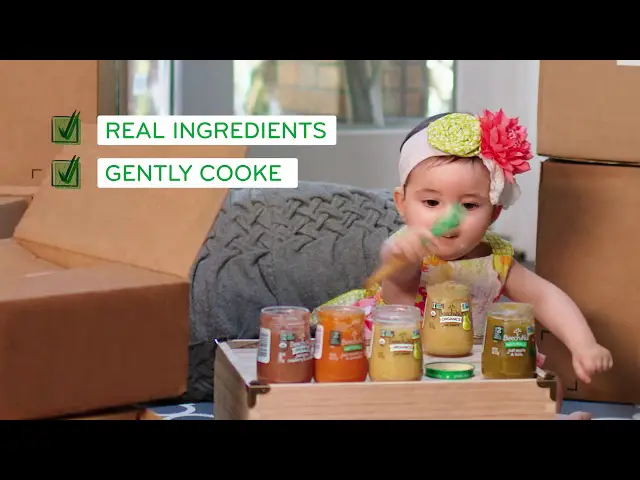What temperature should baby food be served at?
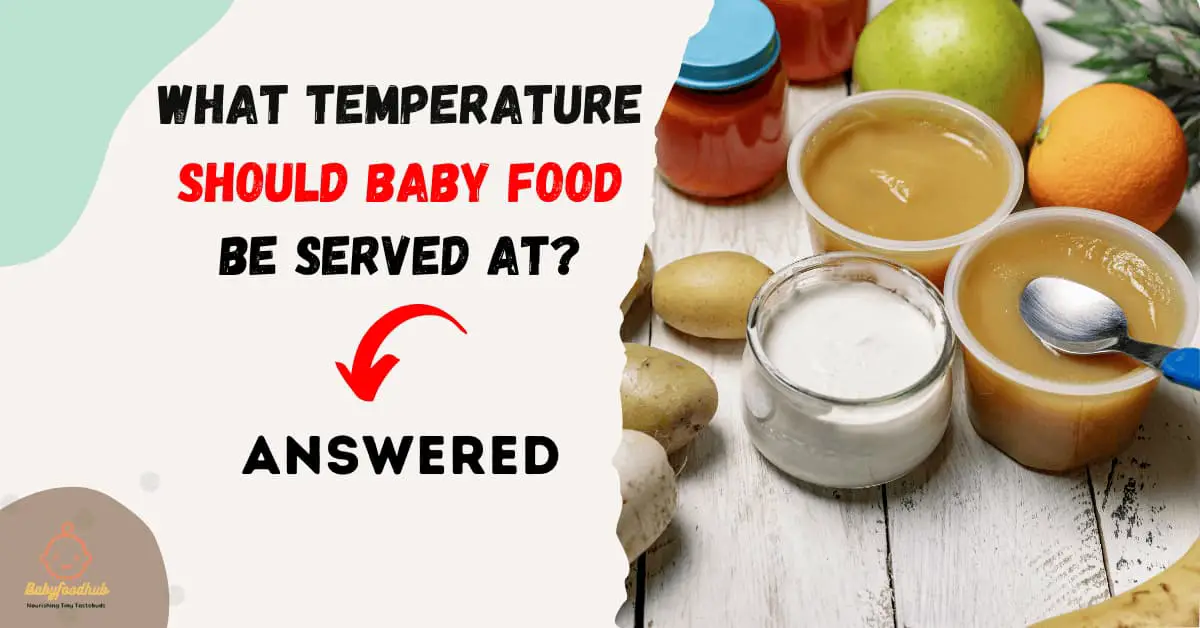
Baby food should be served at room temperature to ensure it is safe and comfortable for your little one to consume. When reheating baby purees, it is important to heat them until they are piping hot, steaming throughout, to kill off any bacteria.
While serving cold food straight from the fridge is an option, it is best to avoid partially reheating food just to avoid waiting for it to cool down. Heating baby food to the right temperature ensures that it is safe for consumption and minimizes the risk of burning your baby’s mouth.
Additionally, serving baby food at room temperature eliminates the need for additional heating or cooling methods when on the go.
The Ideal Temperature Range
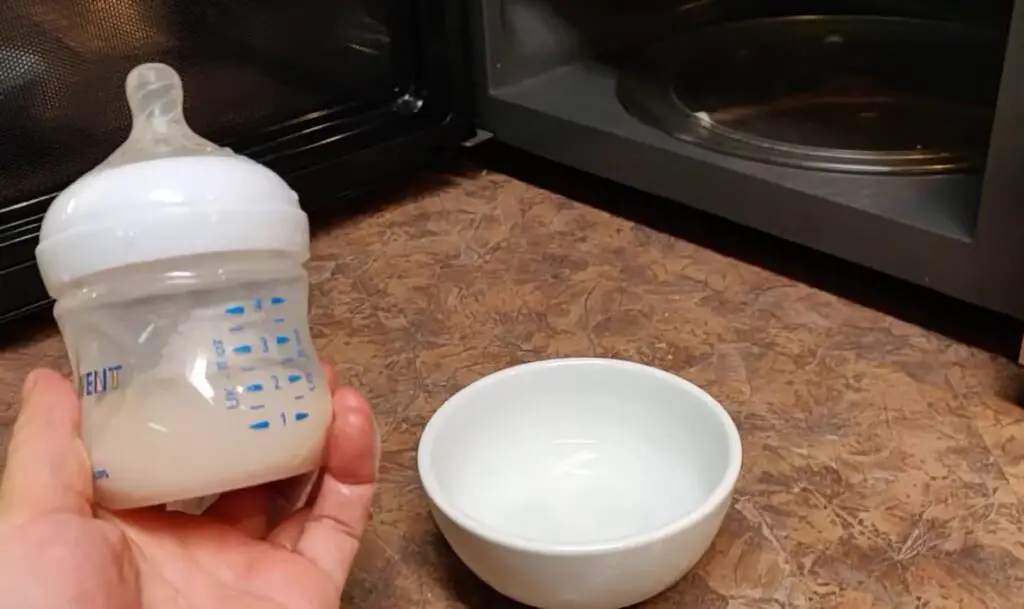
Baby food should be served at room temperature to ensure it is safe and comfortable for your little one. It is important to avoid partially reheating the food, as it should be reheated until piping hot throughout to kill off any bacteria.
When it comes to serving baby food, it is important to ensure that it is at the right temperature to ensure your baby’s safety and enjoyment. Here is the ideal temperature range for serving baby food:
- Room Temperature: Baby purees are often best served at room temperature. This allows for easy eating and ensures that the food is not too hot for your baby’s delicate mouth. Simply take the puree out of the refrigerator and let it sit for a few minutes before serving.
- Piping Hot: Unless the food is served cold straight from the fridge, baby purees should always be reheated until piping hot. This means steaming the food throughout to kill off any bacteria. It is important to note that partially reheating food is not recommended, as it may not reach the required temperature to eliminate bacteria.
- Avoid Microwaving: While it may be tempting to use the microwave to warm up baby food quickly, it is not recommended. Microwaves can heat food unevenly, creating hot spots that can burn your baby’s mouth. It’s best to use conventional heating methods like steaming or using hot water to warm up baby food.
- Test the Temperature: Before serving the food to your baby, always test the temperature by taking a small spoonful and applying it to the inside of your wrist. This area is sensitive and will give you an idea of whether the food is too hot or just right.
- Avoid using Hot Plates: It’s important to note that heated plates or bowls can further increase the temperature of the baby food. Ensure that you serve the puree in a room-temperature dish to prevent any burns or discomfort.
Remember, every baby is different, and their preference for food temperature may vary. It’s essential to observe your baby’s cues and adapt accordingly. By serving baby food within the ideal temperature range, you can ensure a safe and enjoyable mealtime experience for your little one.
Different Types Of Baby Foods And Their Ideal Temperatures
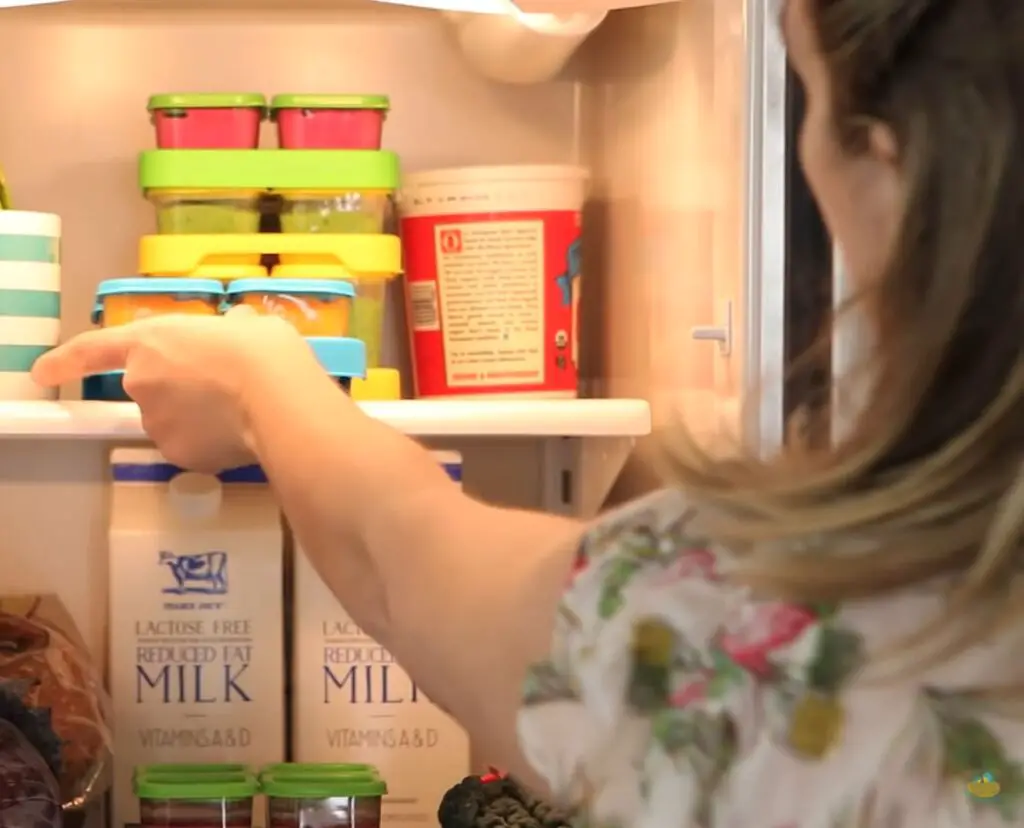
Baby purees should be served at room temperature to ensure they are safe and easy for babies to consume. It is important to avoid partially reheating the food, as it should be steamed throughout to kill off any bacteria.
When it comes to serving baby food, the temperature plays a crucial role in ensuring the safety and palatability of the meal. Different types of baby foods have their own ideal temperature requirements. Here’s a breakdown of the ideal temperatures for various baby food options:
Purees:
- Vegetable Purees: Vegetable purees, such as sweet potato or carrot puree, are best served at room temperature. Avoid serving them cold straight from the fridge, as it may pose a risk of choking and may not be as appealing to your little one. Avoid reheating the puree partially, as it won’t kill bacteria effectively.
- Fruit Purees: Fruit purees, like apple or banana puree, can also be served at room temperature. Just like vegetable purees, avoid serving them straight from the fridge to ensure they are more pleasant for your baby to eat.
- Meat and Fish Purees: Meat and fish purees should be served warm. Reheating them until they are piping hot ensures that any bacteria present are killed off. Steaming throughout is recommended for maximum safety.
Finger Foods:
- Cooked Vegetables: Cooked vegetables, such as steamed carrots or broccoli, are best served warm or at room temperature. Avoid serving them cold, as it may be less appealing to your little one.
- Soft Fruits: Soft fruits, like avocado or plum, can be served at room temperature or slightly chilled. Chilling them can provide a soothing effect for teething babies.
- Cheese and Yogurt: Cheese and yogurt can be served at room temperature. It’s best to avoid serving them cold, as they may be less appealing to your baby.
Remember, always check the temperature of the food before feeding it to your baby. It should be warm but not too hot to avoid the risk of burning their delicate mouth. By following these guidelines, you can ensure that your baby’s food is served at the ideal temperature for both safety and taste.
Risks Of Serving Too Hot Foods
Baby food should be served at a temperature that is warm and safe for the baby to consume. It is important to avoid serving it too hot to prevent the risk of burning the baby’s mouth.
Serving baby food at the right temperature is important to ensure the safety and well-being of your little one. Here are some risks associated with serving baby food that is too hot:
- Burns: Hot food can cause burns to your baby’s sensitive mouth, tongue, and throat. These burns can be painful and may require medical attention.
- Damage to Nutrients: Heating baby food at very high temperatures can lead to the loss of important nutrients, such as vitamins and minerals, reducing the nutritional value of the food.
- Risk of Choking: If the food is too hot, your baby may not be able to tolerate it and could choke on it due to discomfort or difficulty swallowing.
- Aversion to Food: Serving food that is too hot can create a negative association with eating, causing your baby to become reluctant or resistant to eating in the future.
To avoid these risks, it is crucial to serve baby food at an appropriate temperature. Let’s explore the recommended temperatures for serving baby food.
Risks Of Serving Too Cold Foods
Baby food should be served at room temperature or warm to ensure the safety of your baby. Serving it too cold can increase the risk of bacterial growth and potential illness. It is important to heat baby food until piping hot to kill off bacteria and avoid partially reheating to maintain food quality.
When it comes to serving baby food, the temperature plays a crucial role in ensuring the safety and enjoyment of your little one’s meal. While many parents may prefer serving cold or refrigerated baby food for convenience, there are some risks associated with serving foods that are too cold.
Below are some key points to consider:
- Choking hazard: Chilled or frozen baby food can be harder for your baby to swallow and may increase the risk of choking. It’s important to ensure that the food is at a safe and manageable temperature for them to handle.
- Digestive discomfort: Cold foods can be harder for your baby’s digestive system to break down. Serving food at room temperature or slightly warmed can help ease digestion and prevent any discomfort or digestion-related issues.
- Bacterial growth: Cold foods may provide a favorable environment for bacteria to grow. It’s essential to heat baby food adequately to kill off any harmful bacteria that may be present and ensure its safety for consumption.
To avoid these risks, it is recommended to serve baby food at room temperature or slightly warmed. This can be achieved by either letting refrigerated food sit at room temperature for a short time or using a heating method such as steaming or microwaving, ensuring the food is evenly heated throughout.
Remember, always test the temperature of the food before offering it to your baby. A quick touch to your inner wrist or the back of your hand can help determine if the food is too hot or just right. Prioritizing your baby’s safety and comfort will ensure a pleasant mealtime experience for both of you.
Tips For Heating Baby Food Properly
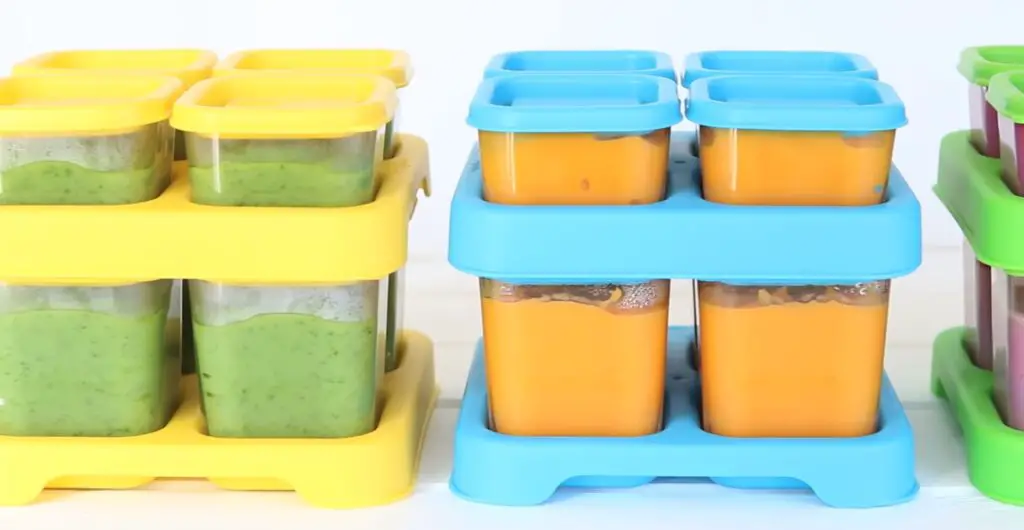
Heating baby food properly is crucial to ensure your baby’s safety. Baby purees should always be reheated until piping hot, and steamed throughout, to kill off bacteria. It is recommended to serve baby purees at room temperature or warm, avoiding serving it cold.
Heating baby food to the correct temperature is crucial to ensure that it is safe for your little one to consume. Here are some tips to help you heat baby food properly:
- Room Temperature:
- Baby purees are often best served at room temperature. It is safe to serve them without reheating if they have been stored properly.
- Avoid serving partially reheated food as it may not be safe for your baby.
- Reheating:
- When reheating baby food, it is important to ensure that it is piping hot throughout. This helps to kill off any bacteria that may be present.
- Steaming is a recommended method for reheating baby food as it allows for even heating.
- Avoid using the microwave to heat baby food, as it can create uneven hot spots that may burn your baby’s mouth.
- Using Hot Water:
- When you’re on the go, you can use a flask of hot water to warm up your baby’s food.
- Pour the hot water into a bowl and place the pot of food in it to warm it through.
- Some venues, like play centers or family restaurants, may be willing to heat your baby’s food or provide hot water for this purpose.
- Test the Temperature:
- Before serving the heated baby food to your little one, make sure to test the temperature.
- Use a clean spoon to take a small sample and touch it to the inside of your wrist.
- The food should feel warm but not too hot. If it is too hot, allow it to cool down before serving.
By following these tips, you can ensure that your baby’s food is heated properly and safe for their consumption. Always prioritize your baby’s safety and well-being when preparing and serving food.
The Importance Of Food Thermometers
When it comes to serving baby food, it is important to use a food thermometer to ensure that it is served at the correct temperature. Using a food thermometer when preparing baby food is crucial to ensure that it is served at the correct temperature. Here are some key reasons why food thermometers are important:
- Accuracy: Food thermometers provide accurate temperature readings, allowing you to know the exact temperature of the baby food before serving it to your little one. This helps prevent the risk of serving food that is too hot or too cold.
- Safety: Babies have sensitive taste buds and delicate digestive systems. Serving food at the right temperature ensures their safety and reduces the risk of burns or discomfort from consuming food that is either too hot or too cold.
- Foodborne illnesses: Heating baby food to the proper temperature helps kill bacteria and other harmful pathogens that may be present. This greatly reduces the risk of foodborne illnesses, keeping your baby healthy and protected.
- Nutrient retention: Overheating or overheating baby food can lead to nutrient loss. By using a food thermometer, you can ensure that the food is heated to the right temperature while preserving its nutritional value.
- Feeding consistency: Consistency is important when introducing new foods to babies. By serving food at the proper temperature, you can create a consistent feeding experience for your little one, making mealtime more enjoyable and predictable.
- Reheating guidance: Food thermometers also come in handy when reheating leftover baby food. They allow you to heat the food to the recommended temperature, ensuring that any bacteria or contaminants are eliminated.
Food thermometers play a crucial role in ensuring that baby food is served at the correct temperature. By using a food thermometer, you can prioritize your baby’s safety, maintain the nutritional value of the food, and create a consistent feeding experience.
How To Cool Down Hot Foods Quickly And Safely
When it comes to serving baby food, it is important to make sure that the temperature is just right. Hot foods can be harmful to your baby’s delicate digestive system, so it’s crucial to cool them down properly. Here are some tips on how to cool down hot foods quickly and safely:
- Ice bath: Place the container of hot baby food in a larger bowl filled with ice water. Stir the food constantly until it reaches room temperature.
- Stirring frequently: Continuously stir the hot food to allow heat to dissipate quickly. This will help cool it down evenly and prevent any hot spots.
- Portion control: Divide the hot food into smaller portions before cooling. This will help it cool down faster and reduce the risk of bacteria growth.
- Refrigeration: Transfer the hot food to a shallow container and place it in the refrigerator. Make sure to leave enough space around the container for air to circulate, which will speed up the cooling process.
- Safe temperature range: Ensure that the food is cooled down to room temperature or below before serving it to your baby. This not only prevents the risk of burns but also reduces the potential growth of harmful bacteria.
- Time limit: It is recommended to cool down and store the baby food in the refrigerator within 2 hours of cooking to maintain its freshness and safety.
- Avoid leaving food out: Do not leave hot baby food sitting at room temperature for an extended period, as it can promote bacterial growth. Promptly cool down and store any leftovers to prevent foodborne illnesses.
- Use an instant-read thermometer: To ensure the proper temperature, use an instant-read thermometer to check if the food has cooled down sufficiently before feeding it to your baby.
- Be mindful of reheating: If you need to reheat the cooled-down baby food, make sure to do so thoroughly until it is piping hot. This will help kill any remaining bacteria that might have grown during storage.
- Safety first: Always prioritize your baby’s safety and follow proper food handling and storage guidelines to minimize the risk of contamination.
Cooling down hot baby food quickly and safely is essential to protect your baby’s health. By following these tips and being mindful of food safety practices, you can ensure that the temperature of your baby’s food is just right for their little tummies.
Testing Food Temperature Before Serving
To ensure the safety and comfort of your baby, it is important to test the temperature of their food before serving it. Here are some ways you can do that:
- Touch test: Before giving the food to your baby, gently touch a small amount of it on the inside of your wrist to check if it feels warm but not hot. This method is quick and easy to use.
- Thermometer: You can also use a food thermometer to accurately measure the temperature of the baby food. Make sure the thermometer is clean and sanitized before inserting it into the food. The ideal temperature for baby food is around 98°F (37°C).
- Visual inspection: Another method is to visually inspect the food. It should be warm but not steaming or too hot. Look for small bubbles or steam coming off the food, indicating that it is heated through.
- Testing utensils: If you are using utensils to feed your baby, such as a spoon, you can dip it into the food and then touch it to your lips. If the utensil feels comfortable against your lips, it should be safe to feed it to your baby.
Remember, babies have sensitive mouths and can easily burn themselves if the food is too hot. It is important to always test the temperature before serving to ensure their safety and enjoyment of the meal.
Frequently Asked Questions For What Temperature Should Baby Food Be Served At?
Is It Better To Feed Baby Food Warm Or Cold?
Feeding baby food warm is better. Baby purees are best served at room temperature. Don’t partially reheat food to avoid waiting. Reheat baby purees until piping hot, killing bacteria. Freezing and reheating foods for baby.
How Do You Warm Up Baby Food On The Go?
When on the go, you can warm up baby food by pouring hot water into a bowl and placing the food pot inside. Some child-friendly venues or restaurants may also heat the food for you or provide hot water.
Can I Warm Baby Food In the Microwave?
Yes, you can warm baby food in the microwave, but make sure to heat it thoroughly until it is piping hot to kill off bacteria. Avoid partially reheating to save time and always let it cool before feeding to your baby.
Conclusion
The ideal temperature for serving baby food is room temperature. It is important to avoid serving food that is too hot or too cold to prevent any potential harm to the baby’s mouth. Baby purees should always be reheated until piping hot to eliminate any bacteria.
It is best to follow proper guidelines for preparing, freezing, and reheating baby food to ensure the safety and well-being of your little one.

